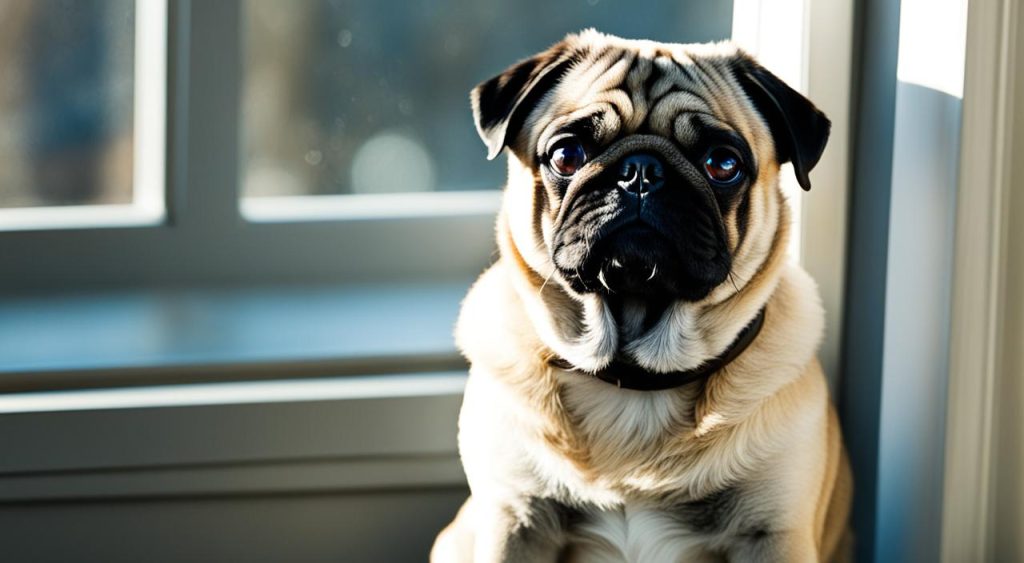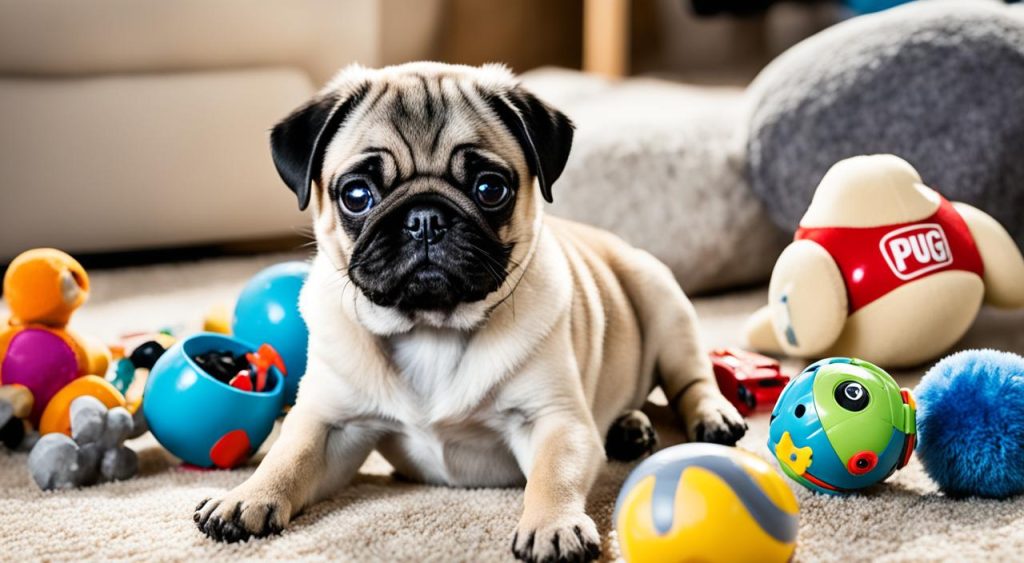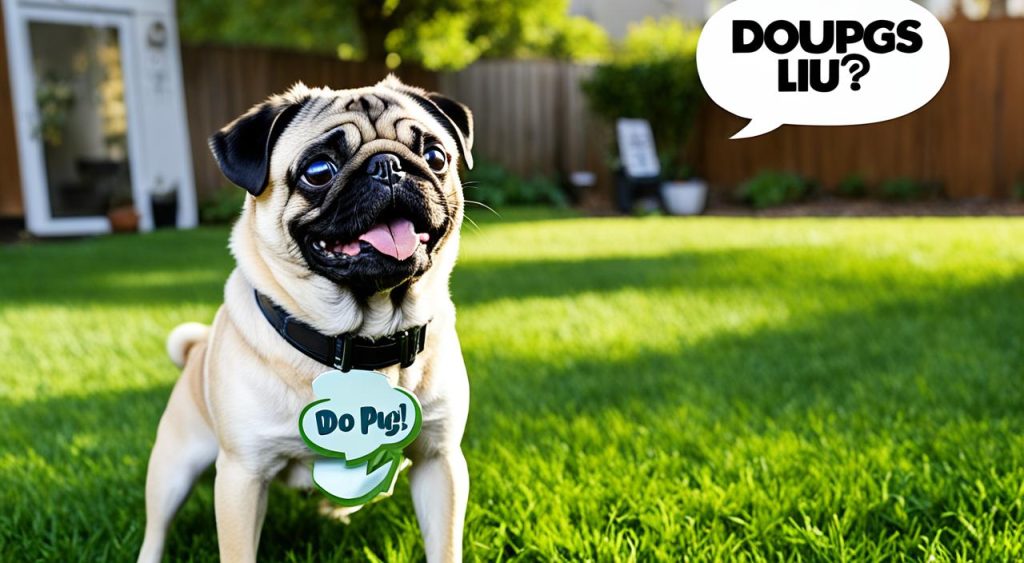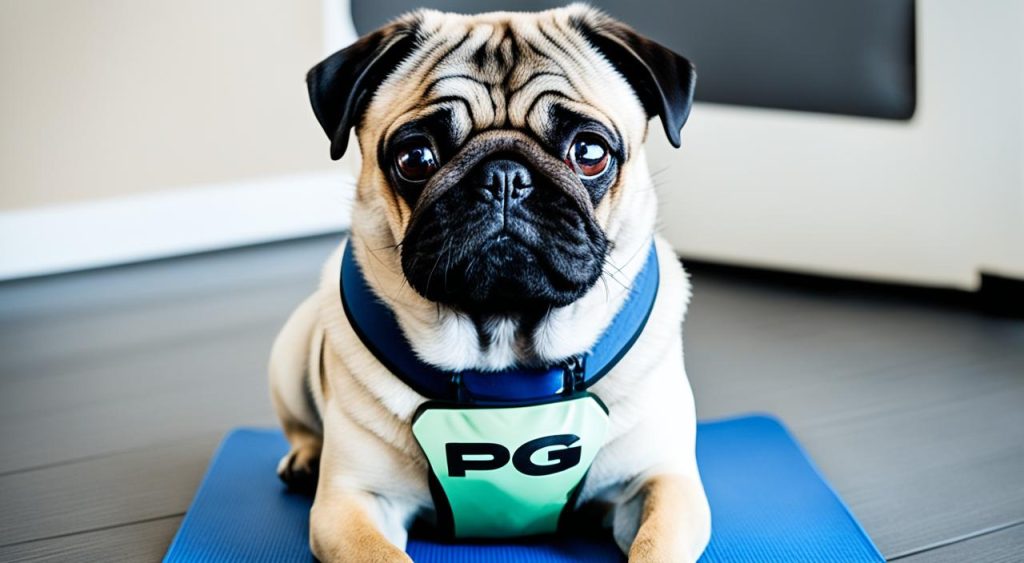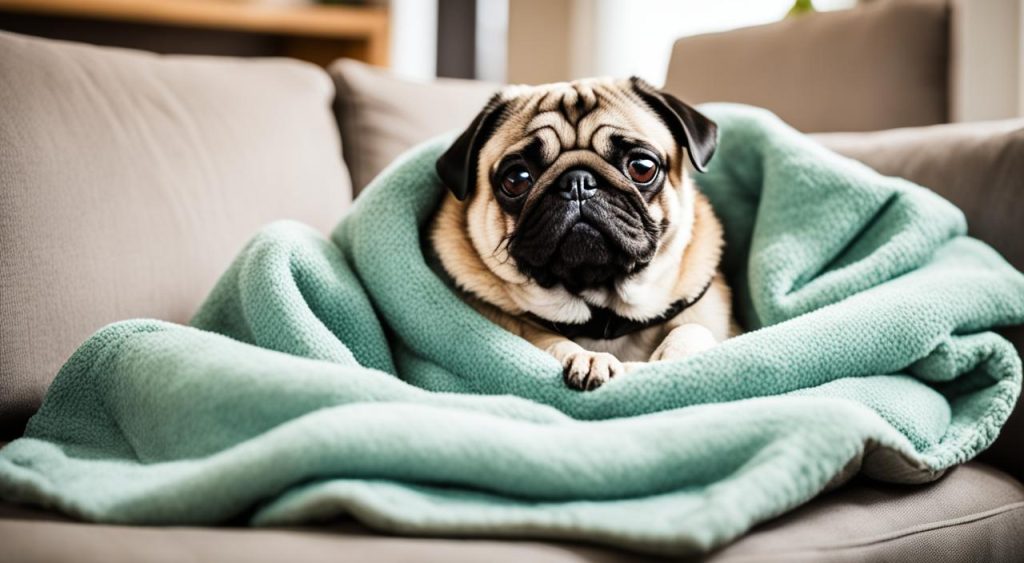When it comes to spending time alone, pugs have unique preferences and needs. While they are a breed that craves human companionship, they also value their independence and solitude to some extent. Understanding how pugs feel about being alone is crucial for their well-being and ensuring they feel comfortable in your absence.
Pugs’ need for alone time is influenced by various factors, including their age, training, and temperament. Puppies, for instance, require constant attention and should not be left alone for long periods. Older pugs, on the other hand, may be able to handle being alone for slightly longer stretches of time.
Leaving a pug alone for an extended period can lead to feelings of distress and anxiety. They may experience separation anxiety, which can manifest in behaviors like excessive barking, chewing, or pacing. To prevent this, it is important to strike a balance between providing your pug with companionship and respecting their need for alone time.
Ultimately, each pug is unique, and their preferences for solitude may vary. It is crucial to observe and understand your pug’s behavior when left alone and adjust their alone time accordingly. By providing the right environment, mental stimulation, and gradual exposure to alone time, you can ensure your pug’s well-being even when you are not around.
Key Takeaways:
- Pugs have a need for companionship but also value their alone time.
- The length of time pugs can be left alone depends on factors such as age, training, and temperament.
- Puppies require more attention and should not be left alone for extended periods.
- Older pugs may be able to handle longer periods of alone time.
- Leaving a pug alone for too long can lead to separation anxiety and behavioral issues.
How Long Can Pugs Be Left Home Alone?
The length of time a Pug can be left alone is dependent on various factors.
While it is debated among experts, some suggest that Pugs should not be left alone for more than 4 hours at a time, while others say 6 to 8 hours is acceptable.
It ultimately depends on the individual dog and their ability to handle being alone.
Some Pugs may be content sleeping while you’re away, while others may experience separation anxiety or display destructive tendencies.
It is important to consider your Pug’s age, training, and temperament when determining how long they can be left alone.
Factors to Consider Before Leaving Your Pug Alone
Before leaving your Pug alone, there are several factors to consider. Puppies, for example, require more attention and should not be left alone for more than an hour or two at a time. Older Pugs may have more control over their bladder but still need regular potty breaks.
It is important to train your Pug early in life to be comfortable with being alone. Gradual exposure to alone time can help them develop independence and reduce anxiety.
It is also important to consider your Pug’s temperament, as some Pugs may be more prone to behavioral issues or separation anxiety when left alone.
Handling Separation Anxiety in Pugs
Pugs are known to be prone to separation anxiety, a condition that can cause distress when they are left alone. It’s important to recognize the signs of separation anxiety in Pugs, which may include excessive chewing and barking, whining and crying, pacing, licking, elimination in undesired areas, changes in mood or depression, and panic when you appear to be leaving.
To help your Pug cope with separation anxiety, there are several strategies you can employ. First, it’s crucial to limit the time you’re away to minimize your Pug’s anxiety levels. Additionally, providing them with toys and activities that keep them mentally and physically stimulated can help distract them from their anxious thoughts.
“Separation anxiety in Pugs can be managed by giving them a safe and comfortable space to spend time in while you’re away. This can include a crate or a designated room with cozy bedding and familiar scents.”
Another effective technique is to tire your Pug out before you leave. A long walk, engaging playtime, or mental stimulation can help them expend energy and promote a good rest while you’re away.
If your Pug’s separation anxiety persists and causes significant distress, it may be wise to seek assistance from a veterinarian. They can provide professional advice and, if necessary, recommend behavior modification techniques or medication to help alleviate your Pug’s anxiety.
Remember, every Pug is unique, and it may take time and patience to find the right approach to manage their separation anxiety. By understanding their needs and providing them with the necessary support, you can help your Pug overcome separation anxiety and ensure their well-being when you’re not around.
Conclusion
When it comes to pugs and alone time, finding a balance between their need for companionship and independence is crucial for their well-being. While pugs crave human companionship and should not be left alone for extended periods, it is possible to leave them alone for shorter durations if their needs are properly addressed.
Factors such as age, training, temperament, and potential separation anxiety should be considered when determining how long a pug can be left alone. Puppies require more attention and should not be left alone for more than an hour or two, while older pugs may be able to handle being alone for 4 to 8 hours. It is important to gradually expose pugs to alone time, helping them develop independence and reducing anxiety.
Creating a safe and comfortable environment for your pug when left alone is essential. Provide them with mental and physical stimulation through toys and activities, and ensure they have a designated, secure space to spend their alone time. By meeting their needs, you can find a balance that respects their need for alone time while providing the companionship they desire.
Ultimately, the well-being of your pug should be a top priority. By considering their individual needs and behaviors, you can make informed decisions about leaving them alone, ensuring they are happy, healthy, and content even when you’re not around.

